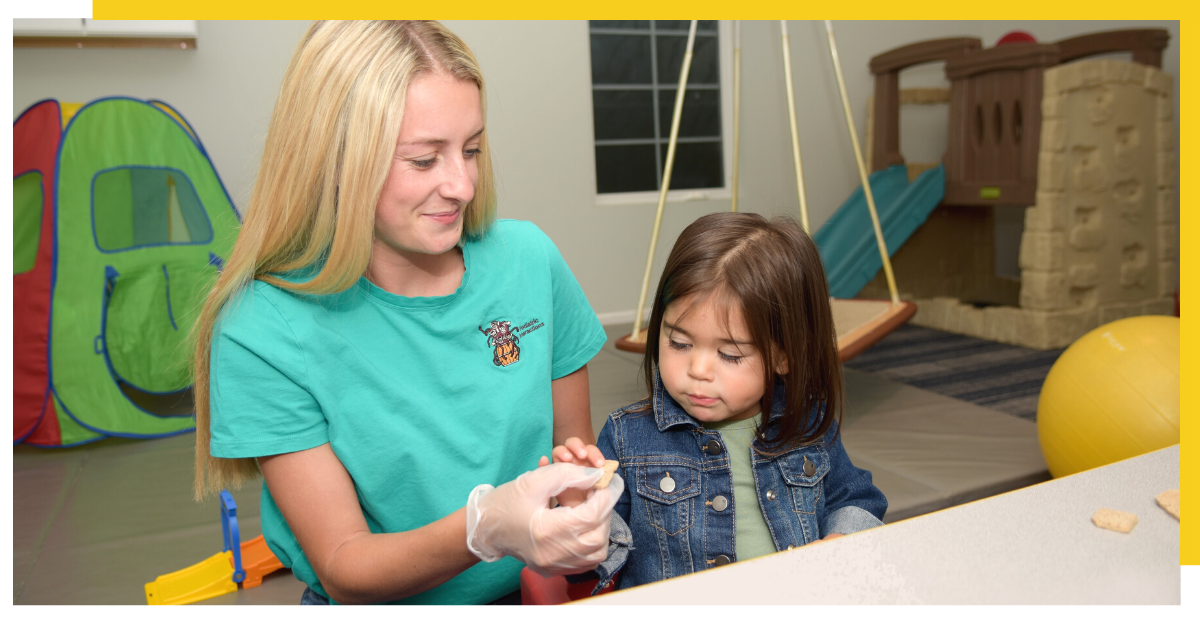Browsing the Course to Effective Feeding: Cutting-edge Methods and Interventions for Efficient Feeding Treatment
Are you battling to discover efficient approaches and interventions for effective feeding therapy? And also, we'll show you the importance of teaming up with households and caregivers for optimal feeding end results. Get prepared to navigate the course to successful feeding!
Assessing Feeding Difficulties and Determining Objectives
You need to start by evaluating your youngster's feeding obstacles and recognizing details objectives for their therapy. This step is crucial in establishing an efficient feeding treatment plan. Begin by observing your youngster's feeding patterns and behaviors. Search for any type of aversions or problems they might have towards particular foods or appearances. Keep in mind of any kind of sensory or physical problems that might be influencing their ability to eat. As soon as you have actually recognized these obstacles, you can then set specific goals for their treatment. These goals ought to be practical and attainable, focusing on improving your child's feeding abilities and general nutrition. You may set an objective for your youngster to be able to tolerate a bigger selection of structures or to self-feed with utensils. It is necessary to communicate these goals with your youngster's feeding specialist so they can tailor the therapy sessions to deal with these details obstacles. By examining your kid's feeding challenges and establishing objectives, you are taking the initial step in the direction of helping them create successful feeding abilities.
Executing Evidence-Based Strategies for Feeding Therapy
Executing evidence-based methods for feeding therapy can cause favorable outcomes for children. You are guaranteeing that the interventions utilized are sustained by scientific research study and have been shown effective when you include these strategies into your kid's therapy plan. This approach boosts the probability of success and aids resolve the details feeding obstacles your youngster might be experiencing.
By following evidence-based approaches, you can give your child with the very best possible care and support. These approaches may include using a selection of sensory experiences during nourishments, such as exploring different appearances and tastes, to urge acceptance of brand-new foods. Additionally, carrying out habits modification techniques can help deal with picky consuming behaviors and promote much healthier eating patterns.
An additional important aspect of evidence-based feeding therapy is including the family in the treatment process. By offering education and assistance to parents and caretakers, they can play an active role in assisting their kid get rid of feeding challenges. This collaborative technique enhances the effectiveness of therapy and advertises long lasting favorable modifications in your child's consuming habits.

Addressing Sensory Processing Issues in Feeding Therapy
Resolving sensory handling problems in feeding therapy can be challenging, but it is vital for advertising a favorable consuming experience for youngsters. When you come across a youngster with sensory processing problems throughout mealtime, it is very important to understand that their reactions to certain appearances, tastes, scents, and even sounds are not deliberate (feeding therapy long island). By recognizing and attending to these concerns, you can help create a supportive setting that encourages healthy and balanced eating behaviors
This strategy allows the youngster to end up being familiar with the food and its sensory residential or commercial properties at their own rate. Furthermore, using a selection of structures and tastes can help desensitize their sensory system and expand their food preferences.
Engaging the kid in sensory play tasks can also be valuable. Urge them to explore various structures, such as squishing, pressing, or touching numerous food products. This can aid normalize sensory input and lower hostilities to specific textures.
An additional vital aspect is giving a tranquil and organized eating environment. Minimize disturbances, such as bright lights or loud sounds, which can overwhelm their senses and hinder their ability to concentrate on eating. Producing a foreseeable regular and making use of aesthetic timetables can likewise assist the kid feel even more safe and in control throughout nourishment.

Using Assistive Innovation and Adaptive Devices
Making use of assistive innovation and flexible equipment can significantly improve the feeding experience for youngsters with sensory handling difficulties. When look at this site you have difficulty with sensory handling, nourishment can be tough and frustrating. With the right tools, you can make it a much more delightful and successful experience.
One choice is making use of specialized tools and plates made to accommodate your requirements. These utensils may have textured manages or a larger hold, making them simpler to control and hold. Plates with split sections can assist separate various foods and prevent them from touching, which can be a source of pain for some kids.
In enhancement to specialized plates and tools, there are likewise assistive devices that can be used during feeding. As an example, a weighted vest or lap pad can offer deep stress input, aiding to soothe and control your sensory system. A vibrating tooth brush or chewable jewelry can offer dental sensory stimulation, making the act of consuming much more enjoyable.
Innovation can additionally contribute pop over here in enhancing the feeding experience. There are tools and apps offered that can give auditory or visual cues, such as timers or prompts, to assist you remain focused and organized throughout nourishment.
Collaborating With Households and Caregivers for Effective Feeding End Results
When working together with caretakers and families, you can collaborate to produce a encouraging and caring environment for effective feeding results. By involving households and caregivers in the feeding therapy process, you can acquire valuable understandings right into the kid's feeding obstacles, habits, and choices. feeding therapy long island. This collaboration enables an all natural method to feeding therapy, resolving not only the physical aspects however likewise the emotional and mental factors that might affect a child's feeding capacities
One secret element of working together with caretakers and families is giving education and learning and training. By outfitting them with knowledge and abilities, they can proactively take part in the feeding therapy procedure and sustain the kid's progression beyond therapy sessions. This can consist of teaching them feeding strategies, methods for taking care of nourishment actions, and understanding the relevance of consistency and routine in developing healthy eating practices.
Furthermore, including family members and caregivers in setting goal and therapy planning ensures that their perspectives and objectives for the child are thought about. By interacting, you can establish practical and achievable objectives that align with the household's worths and concerns - food therapist farmingdale. This joint technique cultivates a sense of ownership and empowerment, developing a solid structure for effective feeding results
Furthermore, open and regular interaction with family members Read More Here and caregivers is vital for reliable cooperation. By preserving ongoing discussion, you can resolve issues, offer support, and make needed adjustments to the feeding therapy strategy as needed. This interaction also enables sharing development updates, celebrating achievements, and identifying any obstacles or barriers that may arise.

Conclusion
You have discovered various approaches and interventions for efficient feeding treatment, such as evaluating challenges, implementing evidence-based methods, resolving sensory handling problems, and using assistive innovation. Keep in mind to constantly stay innovative and proactive in your strategy to feeding treatment.
It's important to communicate these goals with your child's feeding therapist so they can tailor the treatment sessions to resolve these details difficulties.Implementing evidence-based strategies for feeding therapy can lead to favorable end results for children.Attending to sensory handling problems in feeding therapy can be tough, yet it is important for advertising a positive eating experience for youngsters. By entailing families and caretakers in the feeding treatment process, you can obtain beneficial understandings into the kid's feeding choices, habits, and challenges. By furnishing them with understanding and skills, they can actively participate in the feeding therapy procedure and sustain the kid's progression outside of therapy sessions.